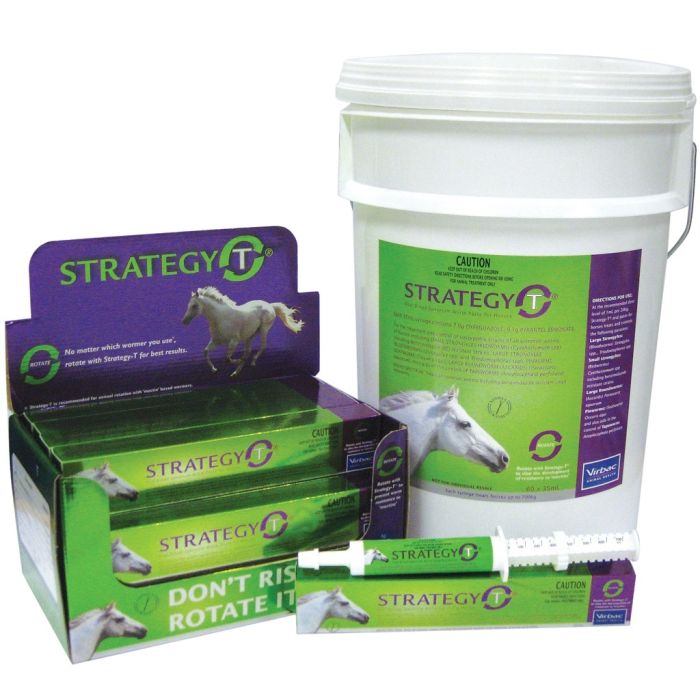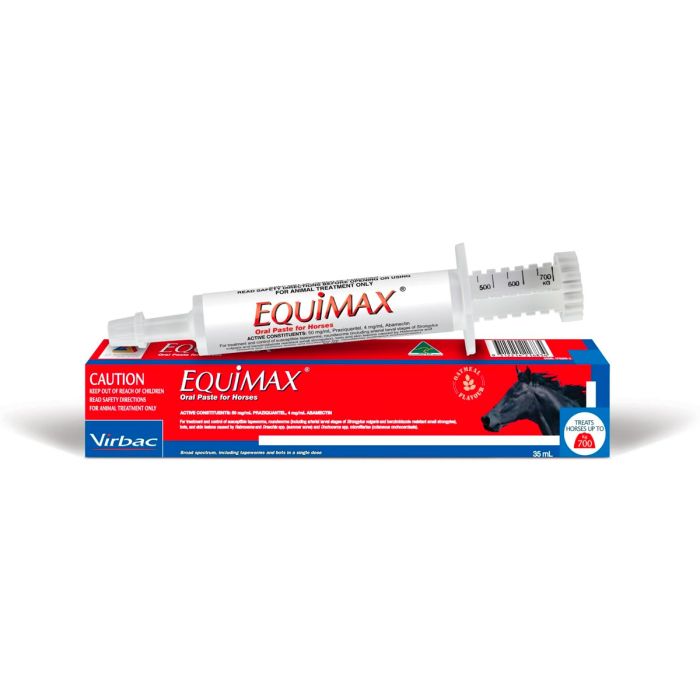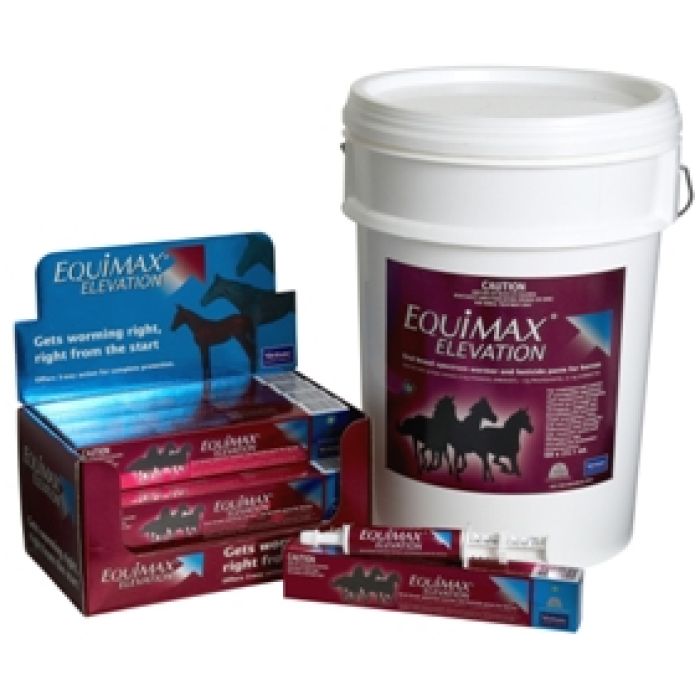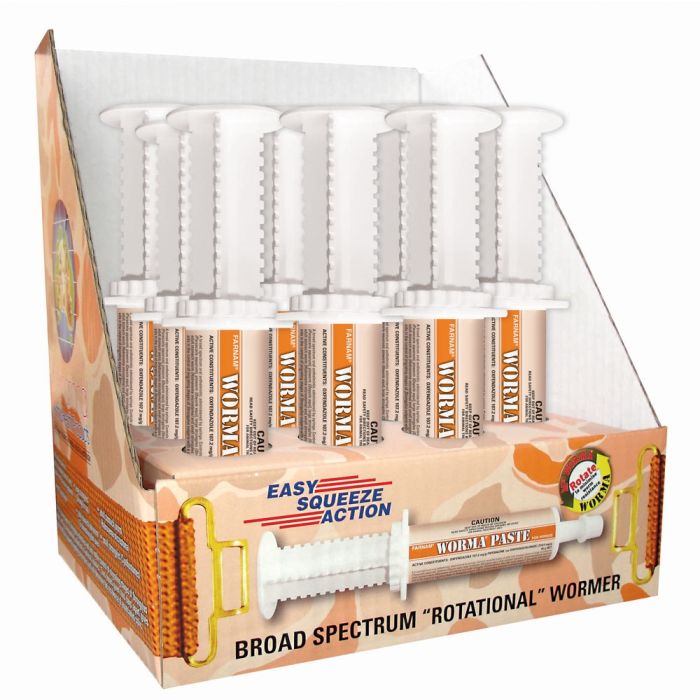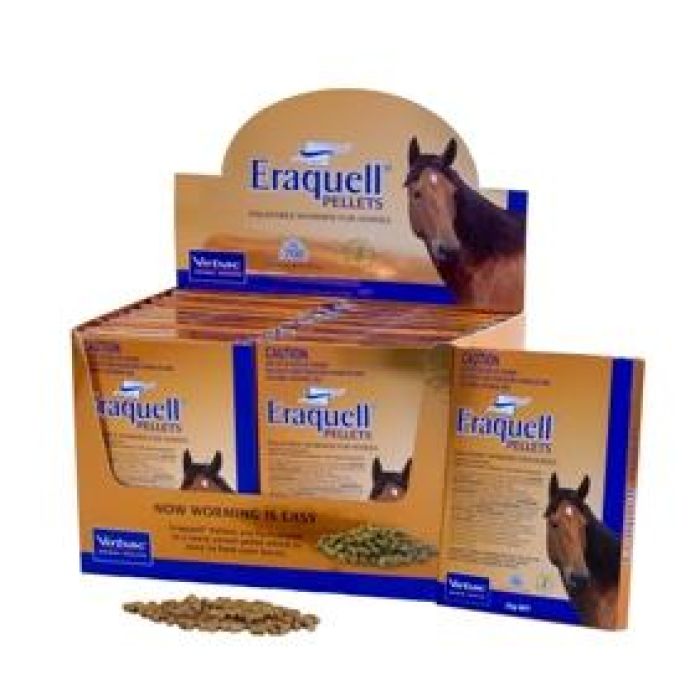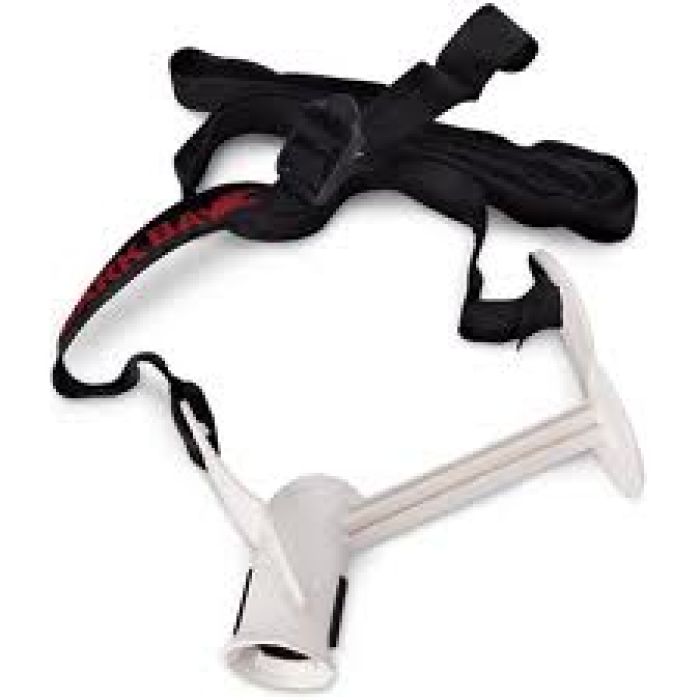Strategy T
Starting at $23.45 $27.95
VIRST
Strategy T - Horse Wormer
Strategy-T contains a unique combination of two worming compounds that act synergistically against the major worms of horses including the benzimidazole (BZ) resistant small strongyles and tapeworms..
Strategy T - Horse Wormer
35g
Manufactured by Virbac
Strategy T is a broadspectrum worming paste that is effective in treating all major worms in horses including:
* Large strongyles (Strongylus spp. Triodontophorus spp.)
* Small strongyles including benzimidazole resistant strains (Cyathostomum spp.,)
* Ascarids (Parascarisequorum)
* Pinworms (Oxyuris equi)
* Tapeworms (Anoplocephalaperfoliata)
COMPOSITION: Each Strategy-T 30mL syringe contains: Oxfendazole.............9.1g Pyrantel Embonate...7.0g
DOSAGE: Dose at 1ml per 20kg bodyweight. Each weight marking on the plunger will deliver 5mL of paste, which is sufficient to treat 100kg body weight. Each syringe of Strategy-T treats a horse up to 700kg.
Strategy T has a unique combination of active ingredients. The synergistic combination of oxfendazole and pyrantel in Strategy-T act to complement one another’s activity against all major equine worms including tapeworm and benzimidazole resistant redworms (small strongyles or cyathostomes). The combination of these two active ingredients in Strategy-T results in a more effective wormer than either active ingredient alone.
Strategy T is the only wormer available that contains the combination of a benzimidazole and tetrahydropyrimadine. This makes Strategy-T the ONLY wormer that effectively treats all major worms of horses including tapeworm and benzimidazole resistant small strongyles that does not contain a macrocyclic lactone (mectin). This means Strategy-T is the best choice of wormer to use in a rotational program as an alternative to the “mectin” products.
With a track record of safety, the extensive internal and independent trials have proven the safety and efficacy of Strategy-T. Safety has been proven in different age groups and life stages of horses including foals, pregnant mares and breeding stallions.
Stategy T has a palatable vanilla flavour making it easy to administer.
Worming intervals
How often horses are wormed depends on the property’s management system. It is ideal to use the minimum number of treatments possible in a year, as over worming can lead to resistance. Depending on a number of factors, some horse owners will need to worm more often than others. Where there are large numbers of horses kept close together and/or horses are frequently moving on and off a property, there will be a greater need for worm control. This is because these horses will be at the greatest risk of contamination. Horses in these situations, generally on studs or agistment properties, will need to be wormed every six to eight weeks. It may be possible, where there are low stocking densities, to worm horses less often. The use of paddock management procedures like manure removal, paddock rotation and grazing with other species will also help lower contamination pressure.
All horses should be wormed at least once every 3 months regardless of the conditions in which they are kept. All horses on a property should be wormed at the same time. New horses should be quarantined and wormed before coming onto the property. If you are unsure about what drenching interval is right for your situation please consult your vet or local Virbac area manager.
Rotation
Worms can develop resistance to worming compounds. Once this occurs, the wormer loses its effectiveness and the horse can remain infected with worms even while being treated regularly. In order to avoid or slow the development and spread of resistance the following rotational strategy is recommended.
How often horses are wormed depends on the property’s
management system. It is ideal to use the minimum number of
treatments possible in a year, as over worming can lead to resistance.
Depending on a number of factors, some horse owners will need
to worm more often than others.
Where there are large numbers of horses kept close together
and/or horses are frequently moving on and off a property,
there will be a greater need for worm control. This is because
these horses will be at the greatest risk of contamination.
Horses in these situations, generally on studs or agistment
properties, will need to be wormed every six to eight weeks.
It may be possible, where there are low stocking densities, to worm
horses less often. The use of paddock management procedures like
manure removal, paddock rotation and grazing with other species
will also help lower contamination pressure.
All horses should be wormed at least once every 3 months
regardless of the conditions in which they are kept. All horses on a
property should be wormed at the same time. New horses should
be quarantined and wormed before coming onto the property.
If you are unsure about what drenching interval is right for your
situation please consult your vet or local Virbac area manager.
Rotation
Worms can develop resistance to worming compounds.
Once this occurs, the wormer loses its effectiveness and the
horse can remain infected with worms even while being treated
regularly. In order to avoid or slow the development and spread
of resistance the following rotational strategy is recommended.

